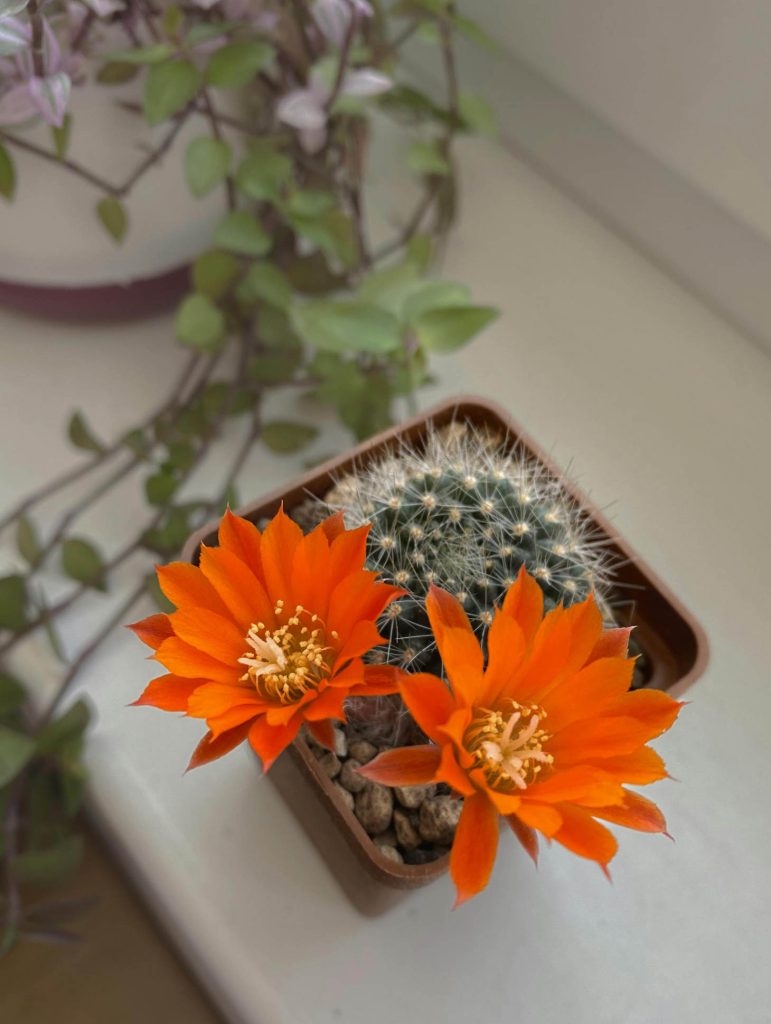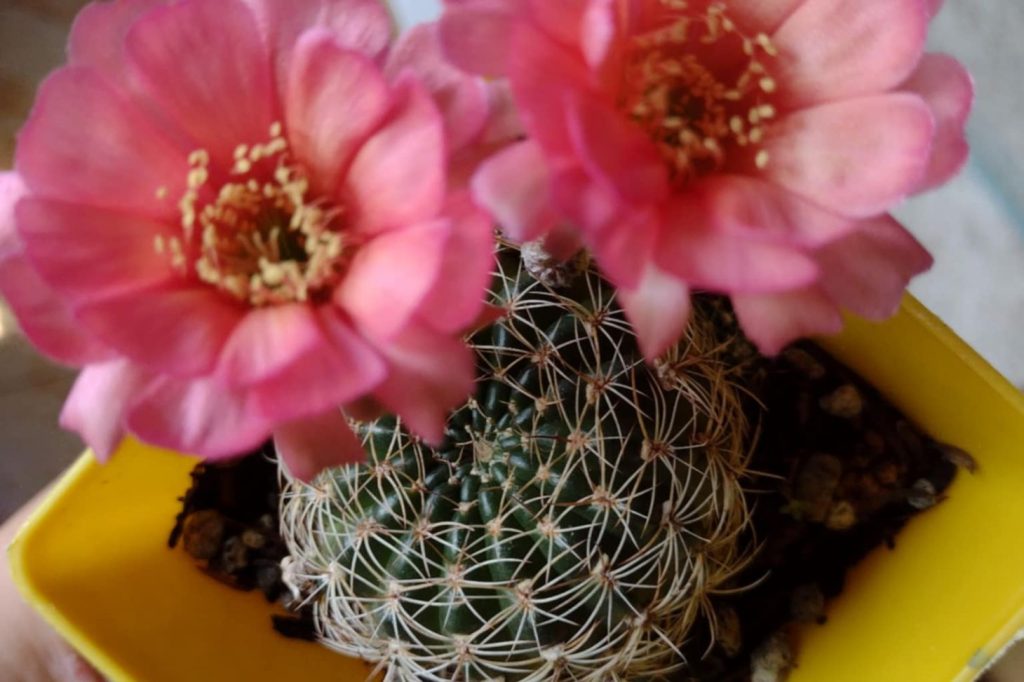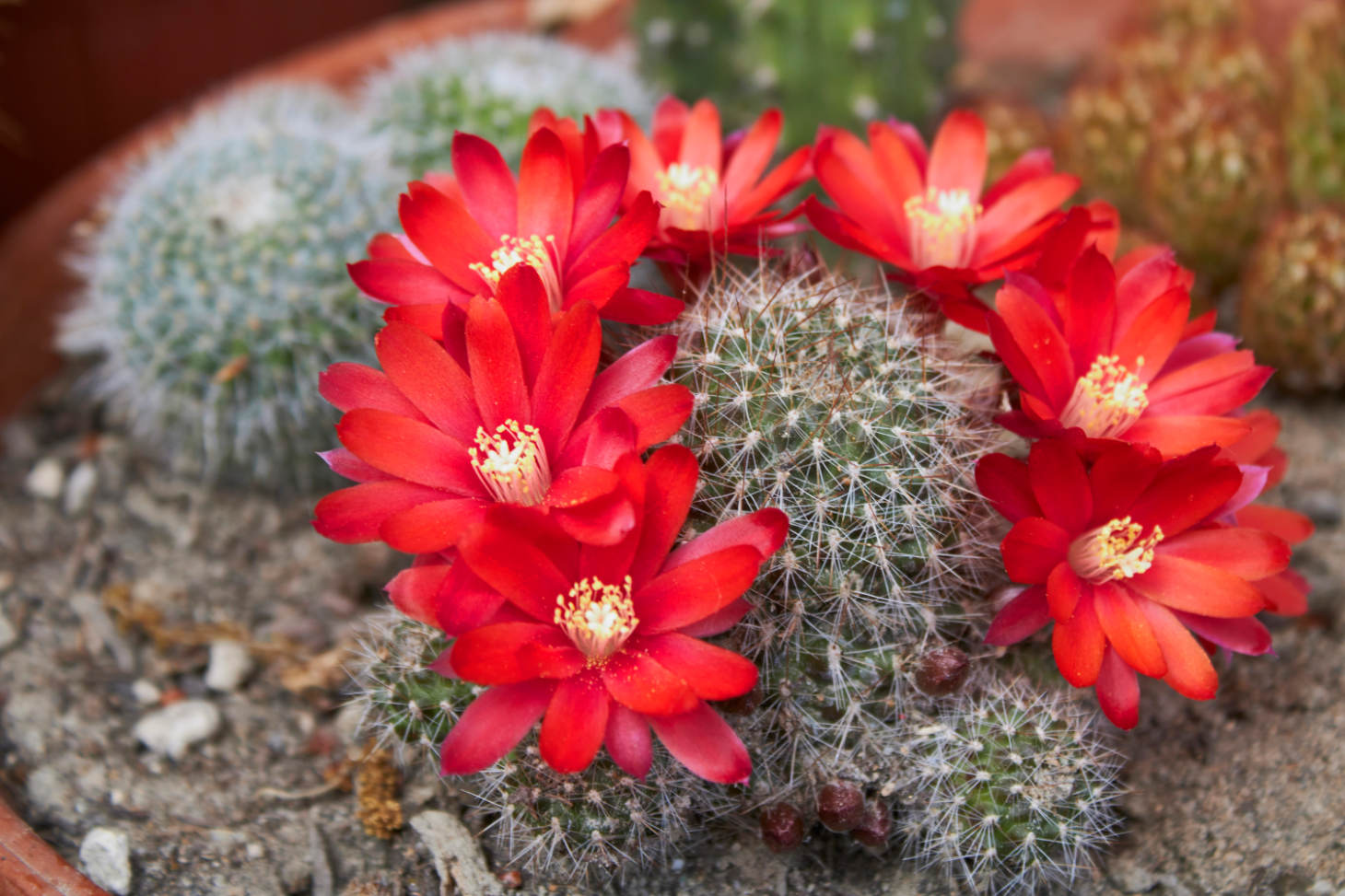Rebutia Cactus Types
Rebutia cacti are among the most charming members of the cactus family, loved for their small size and spectacular blooms. These miniature plants originate from Bolivia and Argentina, making them perfect additions to any indoor collection. As of December 2024, Plants of the World Online recognized only three accepted species within the Rebutia genus: Rebutia fabrisii Rausch, Rebutia minuscula K.Schum., and Rebutia padcayensis Rausch.
Unlike many of their prickly relatives, some Rebutia species are considered kid-friendly as their spines don’t detach easily. They’re also known for their impressive flowering habit, producing vibrant red, yellow, or orange blooms yearly when properly cared for. Most Rebutia species form clusters by growing round “babies” around the main plant, creating an attractive display over time.

These small cacti are perfect for windowsills and small spaces, requiring minimal care while delivering maximum visual impact. They thrive in bright, direct sunlight and can be quite forgiving for beginners while still interesting enough for experienced cactus enthusiasts.
Key Takeaways
- Rebutia cacti are small, cluster-forming plants that produce vibrant flowers in red, yellow, orange, or white depending on the species.
- You can choose from 3 different Rebutia species, each with unique characteristics in spine patterns, growth habits, and bloom colors.
- These miniature cacti need bright, direct sunlight, minimal water, and are easier to care for than many other cactus varieties.
Understanding Rebutia Cactus

Rebutia cacti are small, colorful members of the cactus family that have gained popularity among collectors for their manageable size and beautiful blooms. These charming plants offer both visual appeal and relatively simple care requirements.
Origins and Characteristics
Rebutia cacti originate from the Andean mountain ranges stretching from Bolivia to Argentina. These plants typically grow at elevations between 1,500 and 4,000 meters, where they’ve adapted to survive harsh conditions.
The plants form small globose or flattened-globose stems that usually develop into clusters or mounds over time. Most Rebutia cacti remain compact, rarely exceeding 5 inches (13 cm) in diameter. Their stems feature tubercles arranged in somewhat poorly-defined ribs.
The areoles of Rebutia cacti produce spines that can be straight or curved, adding texture and protection to the plant. These spines vary in color and density among different species.
A distinctive feature of Rebutia is their tendency to produce offsets (baby plants) around the base, creating attractive clusters over time. This clustering habit makes them visually interesting even when not in bloom.
Species Overview
Rebutia fabrisii Rausch: This species typically typically forms small, clumping bodies covered in dense, white or yellowish spines that can range from 4-8 mm in length. Its relatively large flowers range in color from deep orange to fiery red, often appearing in abundance and creating a striking contrast with the plant’s pale spines.
Rebutia minuscula K.Schum.: As its name suggests, Rebutia minuscula is one of the smaller members of the genus, characterized by its tiny, bright to dull green stems. It produces funnel-shaped flowers that are approximately 2-4 cm in diameter. Rebutia minuscula’s flowers are usually vibrant red, pink, orange, or violet.
Rebutia padcayensis Rausch: This species is known for its depressed, spherical bodies and has peripheral spines that are light yellow with brown tips, ranging from 3 to 20 mm in length. Its flowers are typically red with a white throat, but can also be orange or yellow.
You’ll find that most Rebutia species bloom readily when given proper care, with flowers emerging from the sides or near the base of the plant rather than from the top.
Cultivation and Care
Rebutia cacti are surprisingly easy to maintain with proper attention to their specific needs. These small, clustering plants require certain conditions to thrive and produce their vibrant blooms.
Growing Conditions
Rebutia cacti thrive in bright light conditions. Many species can adapt to partial shade but perform best with 4-6 hours of direct sunlight daily. Place your Rebutia in a south or east-facing window when grown indoors.
The ideal growing medium is crucial for success. Use well-draining cactus soil mixed with additional perlite or coarse sand to prevent water retention. This drainage prevents the dreaded root rot that can quickly kill your plants.
Temperature requirements are relatively forgiving. Rebutias can tolerate temperatures as low as 20°F (-6°C) for brief periods but prefer moderate conditions between 60-85°F (15-29°C). Protect your plants from frost and extended cold periods, especially in USDA zones 9-11 where they’re often grown outdoors.
Water sparingly, allowing the soil to dry completely between waterings. During active growth in spring and summer, water approximately once every 2-4 weeks.
Propagation Methods
Rebutia cacti are easily propagated through several methods. The most common approach is division of offsets (pups) that naturally form around the parent plant.
To propagate by division:
- Gently remove a mature offset with roots
- Allow the cut surface to callus for 2-3 days
- Plant in well-draining cactus soil
- Withhold water for one week, then resume light watering
Seed propagation is also effective but requires patience. Collect seeds from pollinated flowers, sow them on the surface of damp cactus soil, and maintain warm, humid conditions until germination occurs in 2-4 weeks.
Dormancy Periods
Rebutia cacti experience natural dormancy during winter months. This rest period is essential for healthy growth and abundant flowering in spring.
During dormancy (typically October through March), reduce watering significantly. Provide water every 4-6 weeks during dormancy, ensuring the soil is completely dry before the next watering.
Temperature changes support proper dormancy. Ideal winter temperatures range from 40-50°F (4-10°C), though Rebutias can tolerate brief periods down to 20°F (-6°C).
Reduce or eliminate fertilizer during dormancy. Resume normal feeding with a diluted cactus fertilizer when new growth appears in spring.
Light requirements decrease slightly during dormancy, but don’t move your plants to deep shade. Maintain bright, indirect light to prevent etiolation (stretching).
Flowering and Varieties

Rebutia cacti are famous for their impressive flowering displays that often cover the entire plant body. These small cacti produce flowers that are disproportionately large compared to their size, making them popular choices for collectors.
Colors and Blooming Patterns
Rebutia flowers come in a stunning array of colors. You’ll find vibrant red, delicate pink, pure white, bright yellow, and warm orange blooms depending on the variety.
Most Rebutia species bloom in spring or early summer. The flowers are funnel-shaped and often curve upward over the plant. A healthy mature plant can produce dozens of flowers during a single blooming period.
Typical Bloom Colors:
- Bright red (most common)
- Yellow
- Orange
- Pink
- White (less common)
The blooms typically ast several weeks during their blooming period in late spring to early summer. Many varieties will flower repeatedly throughout their growing season if conditions are right.
Visual Guide to Rebutia

Identifying Rebutia cacti becomes easier with visual resources that highlight their unique features. A good visual guide helps you recognize the distinctive characteristics of different Rebutia varieties.
Photography and Illustrations
Clear photographs are essential for identifying Rebutia cacti. Close-up images of the plant body show important details like spine arrangement, tubercles, and rib patterns. These features vary significantly between species.
Flower photos are particularly valuable since Rebutia blooms are distinctive and help with identification. Look for images that capture the vibrant colors ranging from yellow and orange to red and pink.
Botanical illustrations often provide more clarity than photographs by highlighting key identification features. These drawings emphasize the structural elements that differentiate one Rebutia variety from another.
When examining images, pay attention to:
- Stem shape (globose or flattened)
- Clustering habit
- Spine color and arrangement
- Flower size and color

